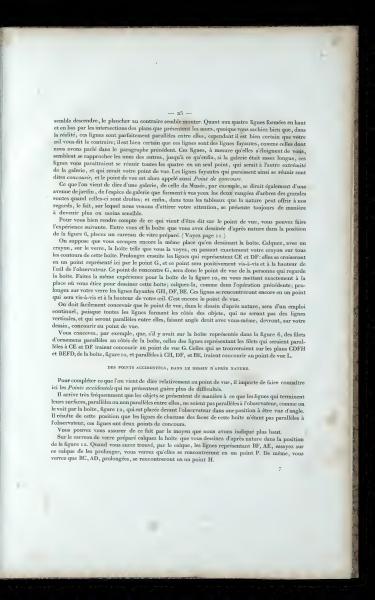— 25 —
The floor seems to descend, while the ceiling appears to rise. Regarding the four lines formed at the top and the bottom by the intersections of the plans presented by walls, even though you know well that, in reality, these lines are perfectly parallel, it's certain that your eye tells you otherwise. These lines appear as vanishing lines, increasingly converging as they move away from you to a single 'vanishing point' at the gallery’s end, known as the 'Point of Convergence.' This concept also applies to garden avenues or roads where rows of trees create a similar visual effect.
To understand the viewpoint concept, perform this experiment: between you and the box landscape you drew, place a prepared glass pane. Trace the box's contours on the glass, extending lines like CE and DF. These lines will meet at a point, depicting the viewer's sightline. Make the same observation for the box in figure 10. The lines GH, DF, BE will converge at another sightline point.
In natural drawing, the viewpoint is critical because it dictates how parallel lines forming object sides converge at the observer’s rear, despite their perceptual alignment at right angles to the observer.
Accidental points also impact perspective. Objects typically appear with non-parallel terminating lines, as depicted by the box in figure 12, viewed at an angle. Each face's non-parallel nature means each face has two such points.
Create a glass overlay and trace the box from figure 12. Extend lines BF, AE, to form point P, and similarly, BC, AD, to intersect at point H.
Translation Notes
1. Vanishing Lines refer to lines that, although parallel in reality, appear to converge at a point due to perspective. 2. 'Point of Convergence' or 'Point de concours' is often used in perspective drawing to represent where parallel lines appear to meet.
